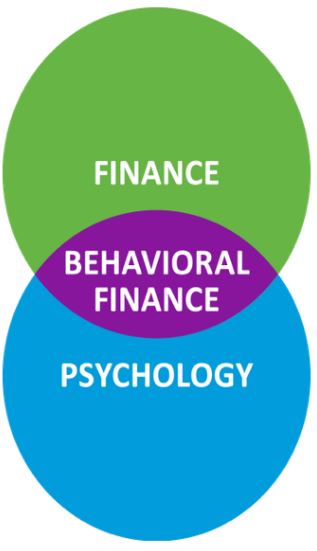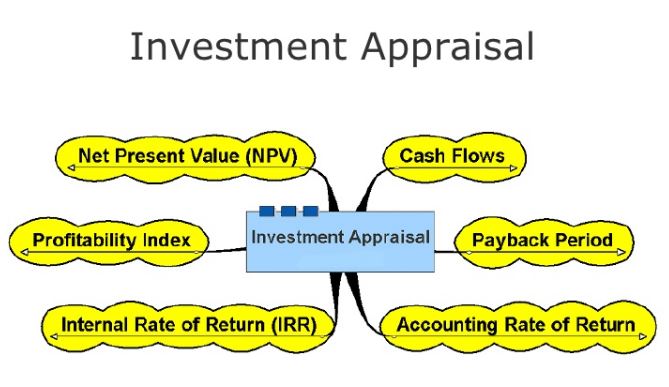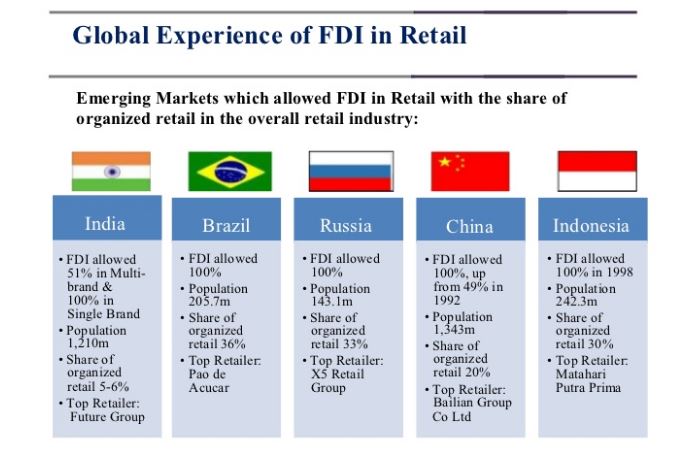International Financial Management – Evaluate the extent to which the bargaining model can be viewed as a practical implementation of the law of comparative advantage?
International financial management is a coined term in today’s world, and it is also known as International Finance. In simple words, it means financial management in an International business environment. International Financial Management is, however, different countries and regions due to the different currencies, government situations, political situations, deficient markets, varied opportunity sets (Susan, & Anil 2009, pp. 381–399)
It is said that international financial management came into the limelight when countries started opening up their borders due to the liberation and globalization policies that came with capitalism. Because of the open borders and increased freedom to conduct business in any country around the world. Entrepreneurs started to source for raw materials and establish their business in different countries provided that the state met the preferences of the entrepreneur (Wissam & Ellen 2014).
The development of liberalization was further enhanced by the swift move towards development of telecommunication and transport technologies. Financial innovations such as currency derivatives, multi-currency bonds, cross-border stock listing and International mutual funds further catalyzed the development of international financial management (Frederic et al. 2010, pp. 395-427).
Globalization and Multi-national Firm
Globalization has manifested itself in today’s world through the relationship of financial markets, increasing roles of the multinational corporations, the dependence of the local economies on foreign trade, transfer of technologies. This type of relationship has led to demands for harmonization of the world statically standards (Susan, & Anil 2009, pp. 381–399). Harmonization and standardization include updating the National Accounts System and the Balances of payment among other systems that would make the exchange of capital easier.
Multinational firms have contributed a lot towards international financial management, in fact, MNCs are the focal point for the studies of International Financial Management. Globalization has enabled companies to expand their territories to different countries and regions. For example countries like NIKE, Nescafé, and Shell Oil among others are present in almost the whole world.
According to Frederic et al. (2010, pp. 395-427), the structure of the global industry has experienced great changes especially in the 1990s due to the cross-border mergers and acquisitions; this is evident since most companies committing their affairs freely with stakeholders in different parts of the world is becoming standard. A massive increment by $200 billion to more than $500 billion in cross-border mergers was recorded in a span of only 2years i.e. from 1995 to 1999.
This lead to the healthy of business especially to the advanced developing countries like Taiwan and Hong Kong who are currently leading in investing in China and other South East Asia countries. In South America Brazilian and Chilean firms have dominated the region. In the same sense, Brazil and Argentina based companies have reciprocated. Korean companies overseas are roughly one-third of the massive domestic investments during 1999.
Due to this traffic foreign investment and trade have developed to become inter-wined. There are exports of foreign affiliates in developing states to the parent organizations overseas. This accounts for one-third of all the exports that originate from developing countries while two-thirds of the developing states involve a multinational buyer or seller. In the least developed countries, these ratios are probably higher because of the advantage that Multinational Corporations take over the cheap labor available in these countries. The rise of Multinational companies and foreign ownership has given various opinions about their effects on the developing countries.
International Financial Management and International Monetary Systems
Chiara et al. (2010, pp. 42-65), outlines that the international monetary system involves the management of money flows in conjunction with institutions that are government related that keep track of vast bulk of money including supporting currency needs and it also ensures payment obligations within and across countries are met accordingly. Various institutions that are responsible and are part of the international monetary system include the central banks international financial institutions, commercial banks, and some monetary market funds.

Wissam and Ellen (2014), adds that one distinguishing factor that makes IMS different from other financial institutions is that IMS is not interest bearing. Instead, money is considered as a unit of account and also means of exchanging goods and service and capital flows across borders in order to facilitate and ensure a perfect environment for exchange of financial assets and the excellent of financial markets. The commonly known definition of money since time immemorial is that it’s an asset in addition to its storage of value.
The USD has incurred changes that have been unheard of especially the one noted in 1985 where the dollar had hit a peak of USD 100 Billion a year. According to most economists was far much beyond the equilibrium level that has ever been attained. This record was due to the high exchanging rate which was a sign of confidence in the US economy, the high rate of exchange was due to the sticker hypothesis of the Dornbusch to fiscal irresponsibility. It was then decided that the dollar value be lower without considering much what took it high by intervening in the foreign exchange markets, this was done for the protectionist sentiment that conducted the US Congress that was mounting trading deficit
A plaza agreement that was formed by the big five countries i.e. united states France Japan great Britain and West Germany, a coordinated program to reach the target of forcing down the enormously shooting US dollar value against other currencies, the program worked perfect was successful in the end. It lost 11 percent of its SDR in 1986, the decrement of the US dollar was steady when Italy and Canada joined the group 5, forming a new group known as the G-7.
The policies worked like a charm, and the US promised to cut the budget deficit and ultimately lower the rate at which the dollar was growing. To achieve this further Japan and Canada promised to stimulate their economies, although they achieved the reduction of the dollar value the budget cuts weren’t forthcoming and so Germany and Japan never succeeded in their mission to stimulate their economies (Arthur 2003, pp. 979-992).
Trade is among the factors in addition to inequities that balances out countries in todays world. These fluctuations in a system of a freely floating exchange of goods and services gives the adjustment system to bring trade back to balances. A country that has both trade and account deficit could get back to balance through devaluing its currency which will increase its exports and lessen the amount of imports (Chiara et al. 2010, pp. 42-65).
In reality the existence of chronic trade deficits in country have consequences to the economy through the systems of flexible exchange rate. One of the main reason for the failure in adjustment of exchange rates is deficit for incentives for various states to keep their currency strong in order to attract foreign investments. But according to the reports by the World Bank over valued currencies only impairs trade more while calling for more inflow of foreign currencies. Finally the game reaches the end and the investors run away and the deficit country have a fall in their currency that erodes even the domestic savings and ushers in inflation and these leads to the international financial management emergency assistance that is directed towards economic austerity.
World Bank statistics recognizes the fact that a mechanism of semi-fixed exchange rates that provides for flexibility in a narrow range and orderly mechanism for adjustments for such ranges. In 1994 the former chairman of the Bretton Woods Commission Volcker Paul openly condemned the liberation of the exchange rates and advocated for the semi-fixed exchange rate regime (Jean et al. 2005, pp. 1-43). In exchange for the Bretton Woods Institution (World Bank and IMF) the countries suffering from deficits are expected to implement a range of deflationary fiscal and deflationary policies, in the late 1990s they were known as Structural Adjustment Program and mostly implemented through letters of intent. The process is usually refer to us loan conditionality’s since IMF financial assistance are conditioned when implementing policy reforms (Xiaoying & Xiaming 2005, pp. 393-407).
Foreign Direct Investments
The rise of foreign Direct Investment started over tree decades ago. From 1980s when the FDI flow was estimated to be 50 billion US Dollars per year OFD has grown up to 2.1 trillion US Dollars in 2007. Due to the economic recession in 2008 FDI fell down to 1.9 trillion US Dollars that is -10% (James & Mark 2000). Foreign direct Investments from developed countries have increased due to the high growth in economies and high performance from the corporate world of these countries.
OFDI particularly flows from the European Union and The United States of America who take up to 84%, the remaining 16% is represented by the transitional economies (BRIC countries).
International financial management, the distribution of emerging market OFDI has evolved considerably changed over the past years. Asia overtook Latin America and Caribbean America has become leading region for Foreign Direct Investment. While MNCs have become fundamental investors in many developing countries, they have also invested in developed countries. The general number of Multinational Corporations has been growing in tandem, with FDI (Caroline 2004, pp. 20-29). This rise does not only show the increasing ownership benefits of these firms but also the pressure for the companies to get a portfolio locality assets as foundation for International competitiveness (Arthur 2003, pp. 979-992).
The Bargaining Model
According to the theory of bargaining, governments yearn for development and a stability payment balance. These goals can be achieved through attracting foreign investments. On the other hand, MNCs are in constant look for sources of raw materials and strategic manufacturing points near their targeted markets. These objectives can be satisfied when MNCs deal successfully with governments of host countries because it is through the sovereignty of the states that the MNCs can achieve these Governments seek economic development and balance-of-payments stability, for example, and both goals can be pursued by attracting and channeling the activities of foreign TNCs. TNCs seek inexpensive sources of raw materials and manufacturing sites (Chiara et al. 2010, pp. 42-65). According to Jean et al. (2005, pp. 1-43).The bargaining process is enhanced by the relative resources that each country has.
The government has its high points from the control over the two most fundamental requirement of the MNCs which are raw materials and intensive labor. On the other hand, the MNCs have goodies that the government desires that they use to influence the government with some of these goodies include helping in lowering the unemployment rate in the country, improving the host countries balance of payments through providing access to the International Markets (Arthur 2003, pp. 979-992).
The relevance of these factors during the bargaining process substantially determines the expected outcome of negotiation between an MNC and the national government. Another factor that greatly influences the negotiation process is the situation between the firm and the government. The relative stakes that each party offers give a situation affecting the bargaining outcome.
Lastly the degree of similarity of interests that both the government and the multinational corporation have. The Similarity of interests makes negotiation more natural and smooth while different and parallel interests among the principles will make decision making very hard (Arthur 2003, pp. 979-992).
The Balance of Payments in International Financial Management
According to Wissam and Ellen (2014) defines this as an account records the payments and receipts of transactions of the citizens of that particular country with residents living in another country. Ones the payments and receipts of each country will include equally only if the operations are also included, neutrality will only favor one state at the expense of the other by allowing it acquire more assets from the not so preferred country. (Xiaoying & Xiaming 2005, pp. 393-407).
An evident example is if Americans purchase automobiles from the Japanese, and don’t engage further in other transactions chances are the Japan will end up holding dollars either in the form of bank deposits or engage in other investments in the US. These payments are then balanced depending on the transactions made for the acquisition of the dollar assets (Jean et al. 2005, pp. 1-43).
However much the balancing is done deficits must occur as a result of inequalities and excess payments, therefore leading to a surplus in particular forms of transactions including the service trade merchandise trade (James & Mark 2000). The balance of payments in any country must refer to some class of operations.
Various definitions have been given to the balance of payments surplus and deficits in the past. Every definition had its distinct implications and purposes. It is until 1973 that there was a focus on the definition of balance-of-payments which had the intentions of measuring the ability of a country to meets its responsibilities of exchanging its currency for other currencies or for tagging it to the Gold system at a fixed rate exchange like the Great Britain did (Maurice 2010, pp. 1–23).
So as to meet the newly formed obligations countries strived to maintain a stock of official reserves, in the form of foreign country currencies or gold that they would use to in supporting their local currencies. The decline in this stores stock was seen as crucial balance-of-payment deficit since it threatened a country’s ability to meet its responsibilities (Arthur 2003, pp. 979-992).
This type of debt was not a good indicator at all when looking at the financial position of a state. The reason being that it never looked at the likelihood that the state would be called upon to meet its delegated duties and the willingness of the international monetary institution to provide assistance (James & Mark 2000).
Caroline (2004, pp. 20-29), points that after 1973, official reserves unit of measuring a country’s ability to meet its obligations diminished as various economic giants gave up their responsibility of converting their currency at a fixed exchange. The made reserves look more meaningless, and there was no longer any concern about the changes in a country’s reserves (Ngaire 2000, pp. 82-841).
Xiaoying and Xiaming (2005, pp. 393-407), purports that after the 1973 talks on the balance of payment surplus or deficits now refer to current accounts. This account has a trade in goods, investment incomes earned abroad and the unilateral transfers. It doesn’t include the capital account, which includes the sales of securities or property. Since the current account and the capital account sum up to the total account, which is necessarily balanced, debt in the current account always comes with an equal surplus in the capital account and vice versa (Maurice 2010, pp. 1–23). Deficit or surplus present in the current account cannot be evaluated without different explanations and the evaluation of an equal surplus or deficit in the capital account.
A State is considered to be in deficit when in its current account is higher its price level. When the Gross National Product is greater the interests rates are also higher and the lesser the barriers towards imports and more attractive it’s to international investors, compared to other countries (Barry 1999).
Kenneth (1996, pp. 647-668), argues that the impacts of any change in one of these factors on the country’s current account balance cannot be predicted without looking at the effects of the other international financial management factors. For instance, if the government increases tariffs, citizens are likely to import fewer goods, therefore, decreasing the current account deficit. In this case, where this decline will occur only when one of other factors changes to bring about a reduction in the capital account surplus.
According to Axel and James (2015, pp.120-148), if none of these factors changes then the decrease in imports due to an increase in tariffs will lead to a decline in the demand for the country’s foreign currency, this, in turn, will raise the local value of the respective country. The increase in the value of any countries increase makes that individual country exports more expensive and imports cheaper, therefore offsetting the implications of the growth in Tariffs. The overall result is that the increase in tariff will bring no change to the current account (Caroline 2004, pp. 20-29)
Contrary to the thoughts of most people, the existence of a deficit in the present account in itself is not a signal towards a recessing economy or irrational economic policies. If a country has a deficit in its current account, it can sometimes mean that the country is importing capital. Importing capital is no more a peculiar system it is just like importing coffee or tea.
References
Arthur, C 2003. “The euro: faith, hope and parity, International Affairs.” pp. 979-992.
Axel, D 2009. “IMF conditionality: theory and evidence, Public Choice.” pp. 233-267.
Axel, D, Jan, E, S & James Vreeland 2015. “Politics and IMF Conditionality”. Journal of Conflict Resolution. Vol. 59, Vol. 1, pp.120-148.
Barry, E 1999. “Kicking the Habit: moving from pegged exchange rates to greater exchange rate flexibility”. The Economic Journal C1 – C14 Equator Principles III.
Caroline, M 2004. “Managing Exchange Rates: Achievement of Global Rebalancing or evidence of global co-dependency.” Business Economics, pp. 20-29.
Chiara, F, Francesco, R & Giuseppe, M 2010. “Why do Firms Invest Abroad? An Analysis of the Motives Underlying Foreign Direct Investments.” The IUP Journal of International Business Law. Vol. 9, No. 1 & 2, pp. 42-65
Frederic, B, Melika, B, S & Marine C 2010. “Detecting Mean Reversion in Real Exchange Rates from a Multiple Regime STAR model.” Annals of Economics and Statistics, pp. 395-427.
James, R, L & Mark, P, T 2000. “Purchasing power parity over two centuries: strengthening the case for real exchange rate stability A reply to Cuddington and Liang.” Journal of International Money and Finance. Vol. 19, No.1, pp. 759–764.
Jean, I, Haroon, M, Morten R & Helene Rey 2005. “PPP Strikes Back: Aggregation and the Real Exchange Rate.” The Quarterly Journal of Economics. Vol.34, No 1, pp. 1-43.
John, H, D 2000. “The eclectic paradigm as an envelope for economic and business theories of MNE activity”. International Business Review 9, pp. 163–190.
Kenneth, R 1996. “International Financial Management The Purchasing Power Parity Puzzle.” Journal of Economic Literature. Vol. 45, pp. 647-668.
Maurice, O 2010. “Does the Current Account Still Matter?” American Economic Review. Vol.102, No. 3, pp. 1–23.
Ngaire, W 2000. “The Challenge of Good Governance for the IMF and the World Bank Themselves.” World Development. Vol. 28, No. 5, pp. 82-841.
Shaun, F & Andrew L 2004. “International Financial Management, new financial system? Towards a conceptualization of financial reintermediation.” Review of International Political Economy. Vol. 11, No.2, pp. 263-288.
Susan, F & Anil G 2009. “Subsidiaries and Country Risk: internalization as a safeguard against weak external institutions.” Academy of International Financial Management, Vol. 52, No. 2, pp. 381–399.
Wissam, H & Ellen, M 2014. “Hong Kong’s Currency Crisis: A Test of the 1990s.” Washington Consensus’ View, International Finance. Vol. 17, No.3, pp. 273–296.
Xiaoying, L & Xiaming, L .2005. “Foreign Direct Investment, International Financial Management and Economic Growth.” An Increasingly Endogenous Relationship World Development. Vol. 33, No. 3, pp. 393-407.
Other Relevant Links
Where Can I Find Finance Dissertations?
Finance Dissertation Topics
Did you find any useful knowledge relating to international financial management in this post? What are the key facts that grabbed your attention? Let us know in the comments. Thank you.




